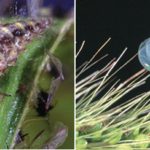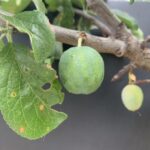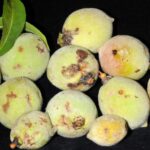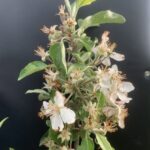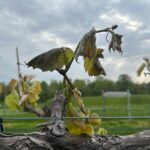There are so many different kinds of insects, but we often focus on the ones that cause damage (for obvious reasons). However, there are many beneficial, predatory insects you can be on the lookout for in your fruit plantings! These insects can be seen throughout the season, attacking aphids, mealybugs, caterpillars, mites, and even scale[Read More…]
Grapes
At the Meigs Horticultural facility, we have been busy completing cover sprays and with crop maintenance. The total rainfall at Meigs this June has totaled a half inch. We need rain to help with fruit development. As a result of very little rainfall, we’ve had very little disease pressure. The last harvest of our Strawberries[Read More…]
Shoot Thinning The optimum shoot density is 5-6 shoots per foot of row. Thinning to this density can help reduce shading, adjust the crop, lower the risk of disease and improve spray penetration. The optimal time for shoot thinning is before the shoots reach 12 inches. Much of the state is past this point, so[Read More…]
Shoots are at various stages of development across the state with some shoots at or near bloom. The most important time of the year for fruit disease control is from pre-bloom to 4-5 weeks past fruit set. The potential for fruit infection drops significantly 4-5 weeks post-bloom. Important diseases to control during this time include[Read More…]
We all know that growing and protecting delicious fruit is a challenge! Whether you’re producing tree fruits, stone fruits, berries, or drupes, all kinds of insect pests are out to exploit the fruits of your labor. Despite our best efforts, sometimes a few insect pests slip under the radar and all you can do is[Read More…]
At the Meigs Horticultural facility we are now seeing, more clearly, the damages from the April 24th freezing temperatures. All fruit crops are starting to grow out of that damage, which is good to see. I would still say that our loss on crops across the farm is 10-15% except for the Shiro Plums. The[Read More…]
Grapevines are in early stages of growth across the state. Significant shoot growth is expected with the warm weather predicted for this week. Disease Control This is a very important time to maintain preventative control over major grape diseases including Phomopsis, black rot, powdery mildew and downy mildew. Fungicide application should begin at 1-3 in[Read More…]
Grapevines are in various stages of early growth throughout Indiana, ranging from bud swell to 6-8 in shoot growth, depending on variety. A cold weather event came across the state on 4/24 bringing temperatures as low as 25°F (see Figure 1). The minimum temperatures in the following areas were reported as follows: Lafayette, IN: 28.9°F[Read More…]
At the Meigs Horticultural facility on April 24th we experienced freezing temperatures from 2 am until 7 am, with a low of 26.8 degrees Fahrenheit for one hour. The damage to fruit crops on the farm is scattered depending on varieties. A rough estimate would be 10% cold damage on the crops. The growth stages[Read More…]
